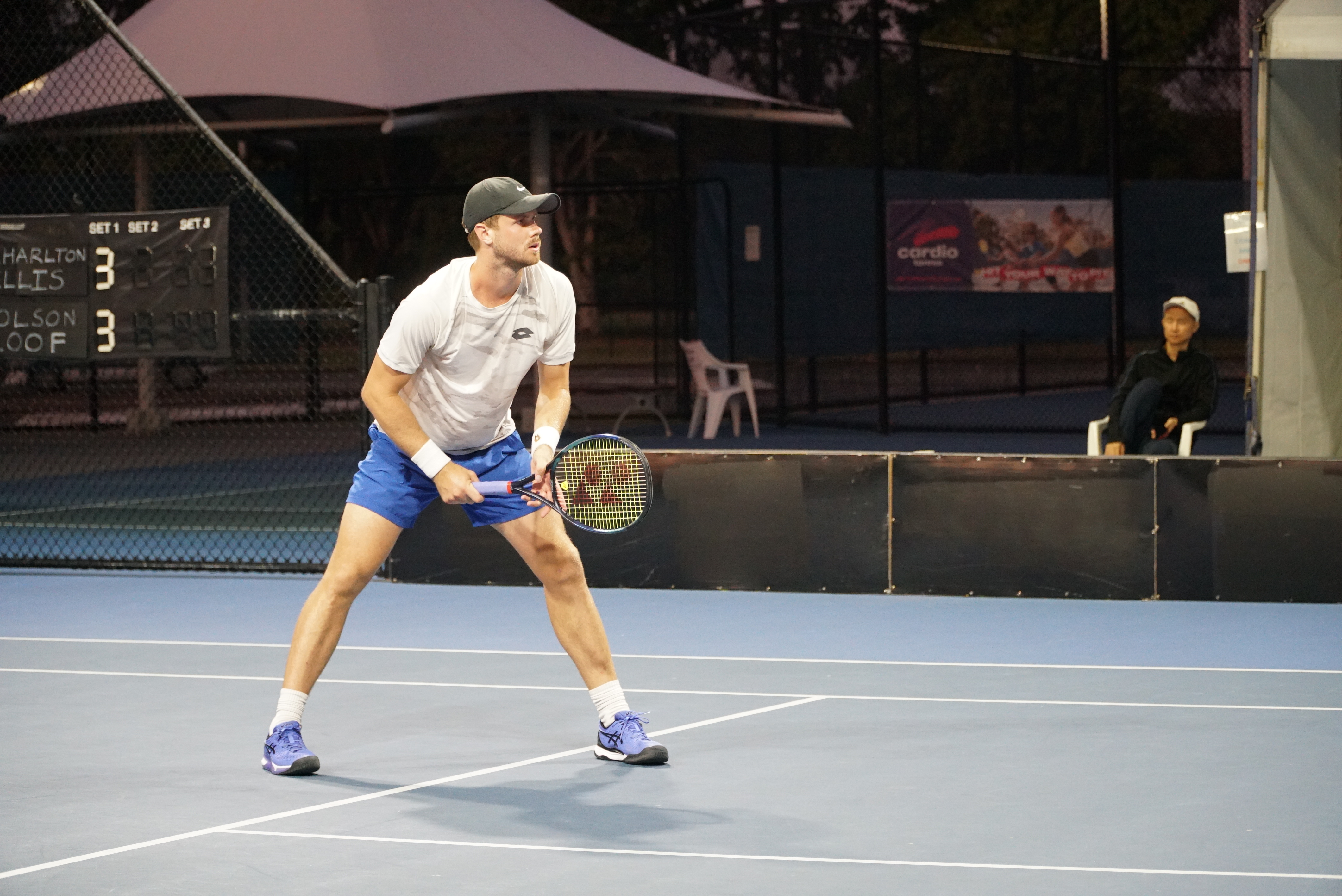Zero to heroes: The events that sparked the revival of Australian tennis

- by Admin
- September 10, 2024

Almost 16 years later, as Hewitt prepares to lead Australia into Davis Cup battle on Tuesday night (AEST) in Valencia as non-playing captain against France, then the Czech Republic and Spain, he can choose from 10 countrymen ranked inside the top 100 – although he will be without Alex de Minaur this time, due to injury.
Alexei Popyrin is on the verge of a top-20 ranking after a breakout month in the US.Credit: AP
That group does not include 2022 Wimbledon runner-up Nick Kyrgios, who has played one competitive match in the past 23 months due to knee and wrist surgeries – and chooses not to play Davis Cup, anyway.
De Minaur, sore hip and all, just reached his third major quarter-final in a row at the US Open, where Alexei Popyrin beat 24-time grand slam-winner Novak Djokovic to reach the fourth round and back up his maiden Masters 1000 title at Montreal last month.
Jordan Thompson, who claimed his first ATP singles title this year and beat top-10 Pole Hubert Hurkacz in New York, also made it to the last 16 before losing to de Minaur, while it took world No.1 Jannik Sinner to stop Chris O’Connell in the third round.
Twelve Australians started in the men’s draw, of whom eight advanced to the second round – including wildcard Tristan Schoolkate winning on his slam debut – and four reached the round of 32 for the first time in 27 years.
Loading
Thanasi Kokkinakis also upset Stefanos Tsitsipas in the opening round, while qualifier Li Tu took a set against four-time major winner Alcaraz.
There are also signs of life on the women’s side in the post-Ash Barty era, with a record five qualifiers swelling Australia’s US Open main draw presence at this year’s tournament to eight.
“The last three or four years, we’ve tried to put in place the right guys in Davis Cup teams, who have gone out there and led by example, and that’s been a major reason, I think [for the success],” Hewitt said.
“They’ve all been pushing each other on the ATP Tour through the year, getting career-high rankings, which is great, and obviously Alex [being] in the top 10 [means] they’ve had guys to look up to as well.”
So, what changed?
There are many and varied answers to why Australian tennis is experiencing a resurgence, which offers renewed hope that someone could soon succeed Hewitt as the country’s most-recent men’s grand slam champion from Wimbledon 21 years ago.
It also depends on your perspective, from inside and outside Tennis Australia.
Wally Masur reached a career-high singles ranking of No.15 before serving as Australia’s Davis Cup coach from 2001-05, including the 2003 title, until a high-profile South African approached him about a new role over a beer at The Oaks Hotel in Sydney.
That person was Craig Tiley, who joined Tennis Australia in 2005 as its director of tennis, became the Australian Open’s tournament director a year later, then eventually the national body’s chief executive in 2013.
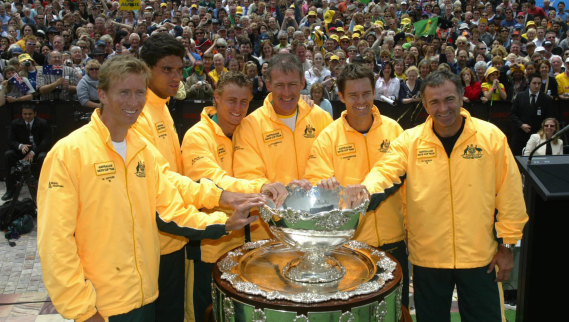
Wally Masur (far right) with Australia’s triumphant 2003 Davis Cup squad.Credit: Paul Harris
Tiley arrived as a dual national coach of the year in the US, including leading college Illinois to the NCAA men’s championship in 2003, and former South African Davis Cup captain.
His big player development move was to introduce a national academy based across major Australian cities. Tiley convinced Masur to work in the Sydney program, and he eventually took over as head coach in 2013.
Loading
“It must have been pretty daunting [for Tiley] to come to a country like Australia with the rich heritage we have, and some big egos, some big-name players – past and present – and set up the national academies,” Masur told this masthead.
“You could go back to each individual player who has benefited from those academies, and some were all in, whereas others, like a Jordan Thompson or a Chris O’Connell [had private coaches] … but the academies provided intensity, volume and finance to get the kids away on trips, so there were suddenly all these resources thrown at Australian tennis, so I see that as a bit of a turning point.”
De Minaur, Popyrin, Thompson, Rinky Hijikata, O’Connell, Aleks Vukic and Max Purcell all spent time in the Sydney academy, but understanding how Australian tennis became healthy again means knowing they had various paths.
Masur referenced the academies as a turning point, but does not pretend that players graduated as finished products – and also mentioned how Vukic and Walton thrived after attending US colleges.
De Minaur and Popyrin, junior peers who are now Australia’s top players, were born in Sydney and trained in the city’s academy, but each spent significant time training overseas.
They met Tennis Australia’s strict criteria, based around rankings at certain ages that kept them on the trajectory to be a professional player according to long-term data, to still be funded despite being based away from Australia.
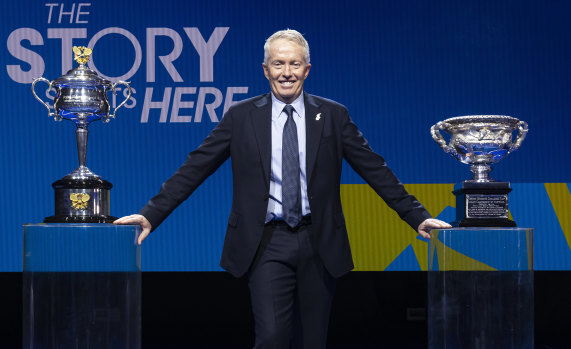
Australian Open and Tennis Australia boss Craig Tiley.Credit: Getty Images
That was the 90-10 rule, with de Minaur and Popyrin sitting in the 10 per cent of players whom Tennis Australia funded despite not being in an academy.
“The criteria was different, and very rigid, but I started to look into it when I got into the role, and it was a bit hard to argue [against it],” Masur said.
Loading
“It was also hard to argue with what was going on overseas and where some of our players were at. It was pretty important to spend money to get those players overseas [to face stronger competition].”
Tennis Australia streamlined the national academies during the COVID-19 pandemic, and there is now one elite training squad in Brisbane.
Hewitt’s role in the rise
Hewitt was once one of the most vocal critics of the dearth of talent coming through the Australian tennis pipeline, saying on the ABC’s Four Corners program in 2010 that the sport was at its “lowest point”.
Tennis Australia announced the country’s winningest Davis Cup player as the country’s new captain for the team competition in October 2015.
Australia had six male players in the top 100 at that stage: Bernard Tomic (18), Kyrgios (30), Sam Groth (53), John Millman (74), Kokkinakis (76) and James Duckworth (99). The Tomic-Kyrgios era was a challenging one for Hewitt; he butted heads with both players at different times.
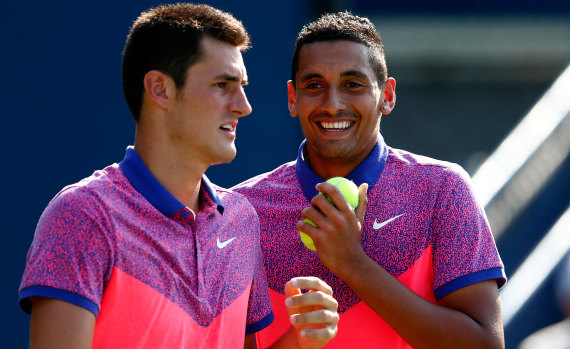
Bernard Tomic and Nick Kyrgios playing doubles at the 2014 US Open during a happier time.Credit: Getty
Rafter was Tennis Australia’s director of player performance at that time and also had a strained relationship with them.
One of Hewitt’s goals was to make sure he taught players about Australia’s rich Davis Cup history.
Loading
De Minaur’s emergence helped Hewitt’s cause, and the former world No.1 handed his mini-me a Davis Cup debut as an 18-year-old against Germany in early 2018.
Hewitt found a kindred spirit – and vice versa – and de Minaur transformed into Australia’s standard-bearer and most passionate Davis Cup representative.
“A lot of people have long told me that they see some of my characteristics in the way he goes about his tennis,” Hewitt told this masthead last year. “I can definitely see that. That never-say-die attitude was something I prided myself on … he’s in the same mould when it comes to that.”
Together, along with others, they have fostered a strong culture in Davis Cup that has flowed onto the tour.
However, Hewitt, just like Tennis Australia’s national academy, does not deserve sole credit. There are swings and roundabouts with player talent, and this is a gifted crop.
Individual coaches, such as Marinko Matosevic, who works with Thompson and O’Connell, have been pivotal. Part of Matosevic’s coaching success is that he is willing to tell his players what they don’t want to hear.
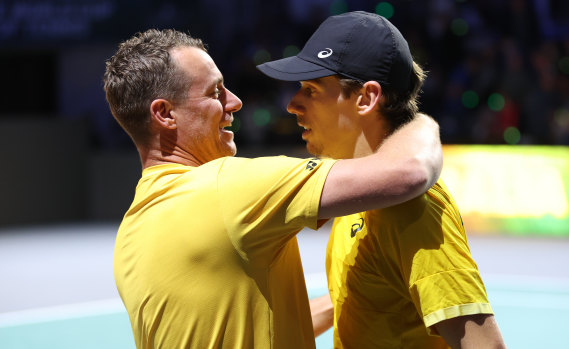
Lleyton Hewitt and Alex de Minaur are kindred spirits.Credit: Getty Images
De Minaur retains his childhood coach, Adolfo Gutierrez, while Popyrin’s career has spiked since hooking up with former Belgian star Xavier Malisse before adding Neville Godwin to his team.
That said, Hewitt, who is omnipresent at Australian men’s player’s matches at the slams, remains a central figure who was the player most of this generation looked up to.
“Everybody knows the player he was, and that’s the mindset he approaches with everything,” Masur said of Hewitt. “He’s very competitive. Davis Cup is very close to his heart, and he will go the extra mile for the player. You can’t underestimate it.”
News, results and expert analysis from the weekend of sport are sent every Monday. Sign up for our Sport newsletter.
The Latest News
-
November 10, 2024Openers flop as batting weakness exposed; Wild Thing’s triumphant return: ODI Series Player Ratings
-
November 10, 2024Kmart Australia’s Anko expands to PH – Malaya Business Insight
-
November 10, 2024Australia A takeaways: Harris, Bancroft fail auditions, Konstas steadies ship
-
November 10, 2024Joseph-Aukuso Suaalii: Australian stars against England in ‘first grown-up game of rugby’
-
November 10, 2024Australian forces land in Indonesia for joint exercises
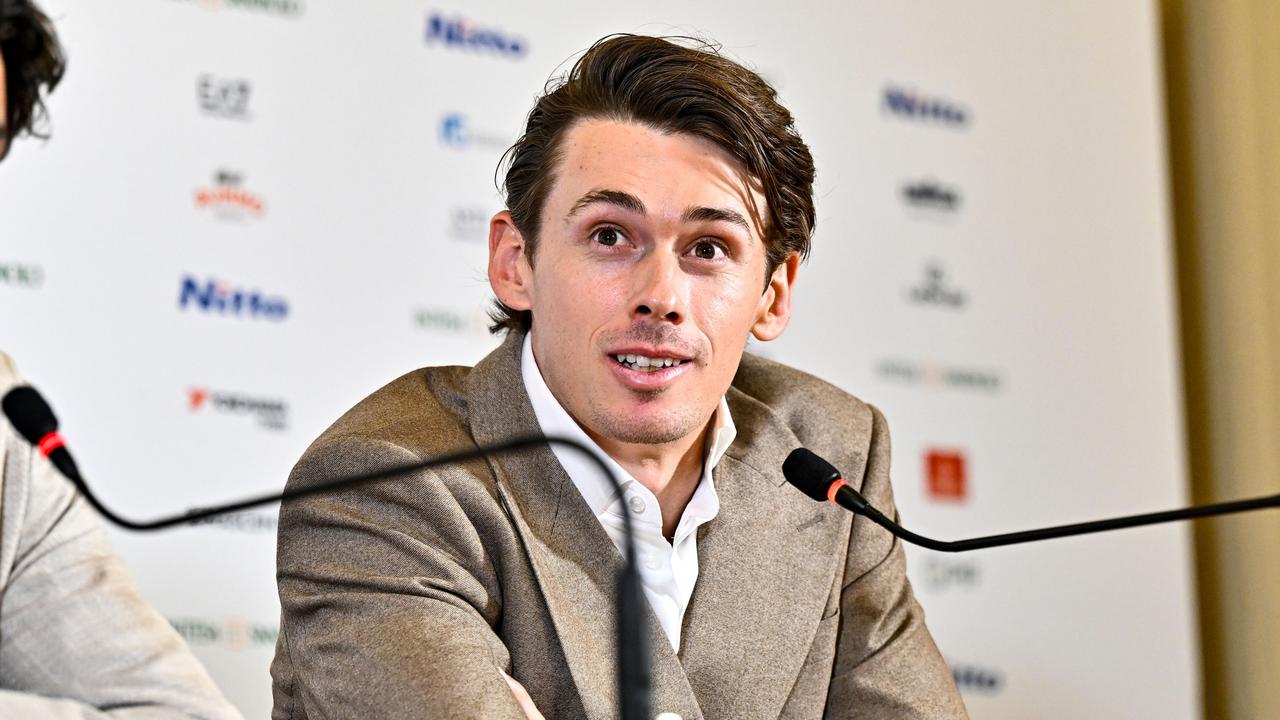
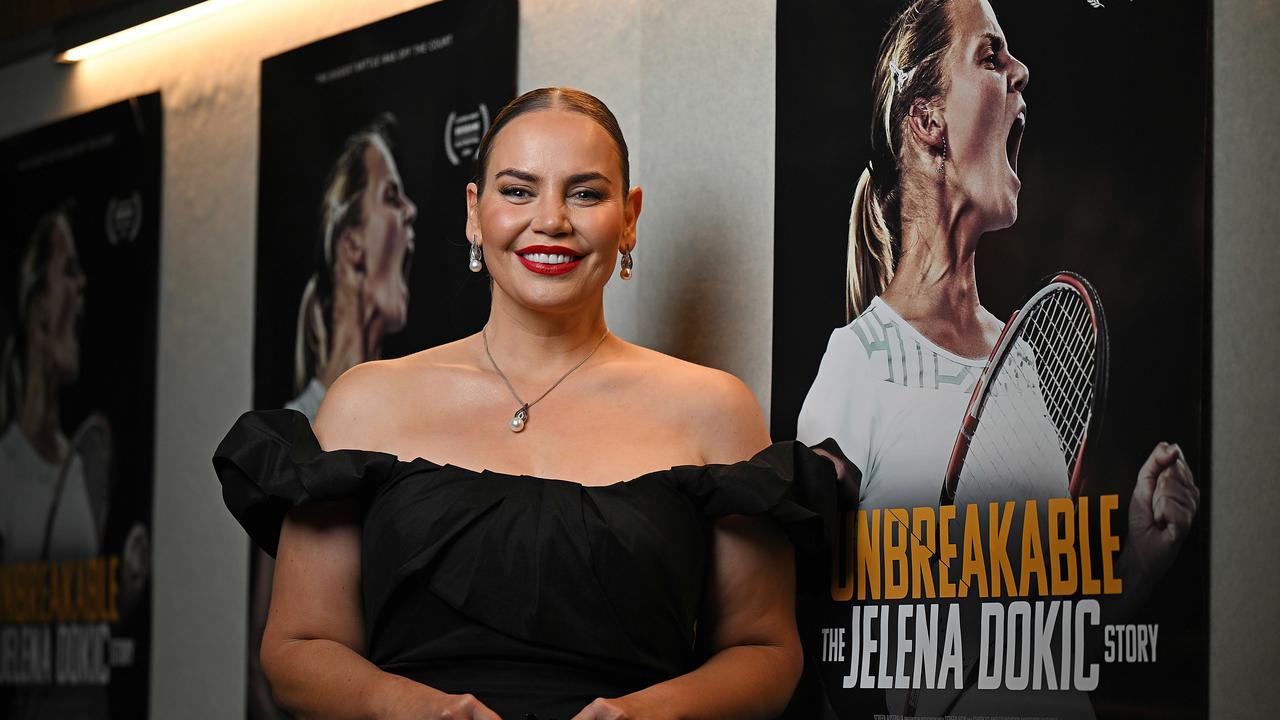
/origin-imgresizer.eurosport.com/2024/11/08/image-d9cd14bb-9ca7-4522-a277-bbc1943220c2-85-2560-1440.jpeg)
